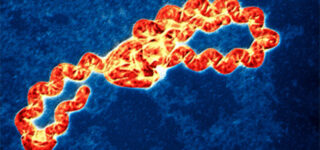Dear Editor,
We have read with interest the article entitled “cagE as a biomarker of the pathogenicity of Helicobacter pylori” by Ramis et al.1. In this study, with a sample size of 57, the authors suggested that cagE is an important prognostic indicator for developing lesions during Helicobacter pylori infection. This suggestion was based on the fact that a statistically significant association was found between cagE and gastric erosion, but not between cagA and gastric erosion.
With reference to this study, we conducted a study in the Kurdistan region of Iraq to examine relationships between H. pylori virulence factors and clinical outcomes. Antral Biopsies were collected from 105 patients visiting the Endoscopy Department at the Azadi Teaching Hospital for diagnostic upper gastric endoscopy. Deoxyribonucleic acid (DNA) was extracted directly from the biopsy samples, and the presence of H. pyloriwas confirmed by polymerase chain reaction (PCR) amplification of the ureA gene. We amplified the cagA,cagE, vacAs1/m1, vacA, iceA1, iceA2, and babA2 genes and found a statistically significant association between cagA and gastric and duodenal ulcerations (p = 0.005), but no statistically significant association between cagE and gastric and duodenal ulcerations (p = 0.659). In addition, no association was found between other genes and clinical outcomes.
cagA is a part of a 40-kb DNA insertion cassette designated as the cag pathogenicity island (cagPAI), which may have a non-Helicobacter origin. The cagPAI contains 31 putative genes, 6 of which are thought to encode components of a bacterial type IV secretion system. cagE, is a homolog of the virB4 gene from Agrobacterium tumefaciens2 and also is a part of the cagPAI region of Helicobacter pylori genome . The presence of cagE is essential for the formation of type IV secretion system.
Recent studies have indicated that the cagA protein is directly injected into epithelial cells via the type IV secretion system, where it undergoes tyrosine phosphorylation in host cells3. The presence of cagA has been considered as an important predictor for the severity of the pathogenicity of H. pylori, on the other hand the role of cagE as a marker of the disease is still to be contemplated, as shown by the data from our study. The contradiction in the results of our study and that of Ramis et al. may be due to differences in the respective study designs and sample sizes. Therefore, a large cross-sectional study involving multi-centers with different populations should be designed to study the association between virulence factors and clinical outcomes. In addition, such a contradiction should not discourage small, national, cross-sectional association studies, because such studies may help suggest new determinants as virulence factors specific for H. pylori infections. In addition to the presence of cagA and cagE, empty-site PCR is also suggested to confirm the presence of cagPAI. Finally, we believe that none of the H. pylori virulence factors should be considered as predictors for H. pylori-related pathogenesis without studying other effects e.g. the host polymorphisms in genes responsible for inflammation and protection against oxidative stress, also genes involved in metabolism of drugs used in eradication of H. pylori, and environmental factors4.

